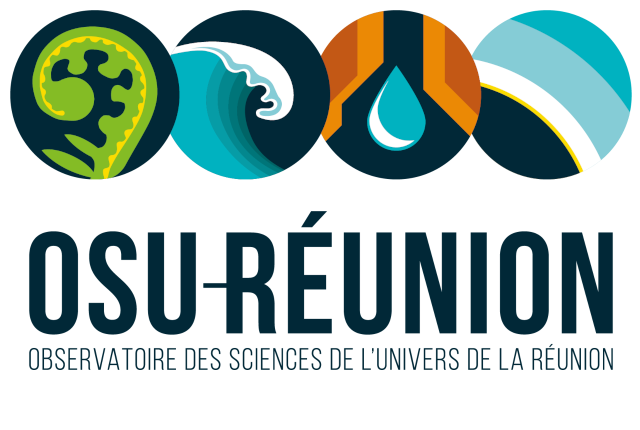2024
Type of resources
Available actions
Topics
INSPIRE themes
Keywords
Contact for the resource
Provided by
Years
Formats
Representation types
Update frequencies
status
Scale
-

The beach profile is a sectional representation of its topography. The beach topography and its dynamics (by beach profile or transect approach) is illustrated by the acquisition of altimetry data along a fixed profile. 42 profiles are regularly monitored on the reef coast of Reunion Island: 2 profiles per year before the swell seasons of summer and austral winter; the impact of the events of strong swells (cyclones, southern swells) is systematically measured on the labeled Dynalit sites and more sporadically on the other sites. The methodology deployed locally since 2012.
-
Since 2012, 3 lidars from the Atmospheric Physics Observatory of La Réunion (OPAR) have been performing aerosol profile measurements at the Maïdo observatory site, located at 2160 meters to the west of the island of La Réunion. These profiles are obtained at several wavelengths, 355nm and 532nm, and there are also depolarized channels at 532nm. The data from these 3 lidars are processed in two stages: initially, the data are manually cleaned of disturbed profiles, either by atmospheric effects, such as the passage of clouds, or by electronic effects like noise. They are then summed over the night. This is the L1b level, and the data are available in the Matlab format (.mat). Subsequently, the data are processed to convert from a profile of received photon number to a profile of aerosol extinction and scattering. The methodology used is based on the Klett calculation at one wavelength. This is the L2b level, and the data are available in the NetCDF format (.nc) with the NDACC convention in the choice of variable names. Therefore, the data are distributed across 6 directories, 2 levels of processing for each lidar. The raw data from the instrument (called L0) are in a proprietary format, the Licel format, and are not accessible in open access, only via FTP with restricted access.
-
Orthophotographie de la plage de l'Hermitage (La Réunion, Saint-Gilles les Bains, 97460). Données acquises sur le site d'observation Station Côtière et Marine (STACOT) du SNO DYNALIT, et produites par l'OSU-Réunion et l'UMR Espace-Dev.
-
Orthophotographie de la plage de l'Hermitage (La Réunion, Saint-Gilles les Bains, 97460). Données acquises sur le site d'observation Station Côtière et Marine (STACOT) du SNO DYNALIT, et produites par l'OSU-Réunion et l'UMR Espace-Dev.
-
Orthophotographie de la plage de l'Hermitage (La Réunion, Saint-Gilles les Bains, 97460). Données acquises sur le site d'observation Station Côtière et Marine (STACOT) du SNO DYNALIT, et produites par l'OSU-Réunion et l'UMR Espace-Dev.
-
Orthophotographie de la plage de l'Hermitage (La Réunion, Saint-Gilles les Bains, 97460). Données acquises sur le site d'observation Station Côtière et Marine (STACOT) du SNO DYNALIT, et produites par l'OSU-Réunion et l'UMR Espace-Dev.
-
Modèle Numérique de Terrain (MNT) de la plage de l'Hermitage (La Réunion, Saint-Gilles les Bains, 97460), construit par photogrammétrie aérienne acquise par drone. Les données sont acquises sur le site d'observation Station Côtière et Marine (STACOT) du SNO Dynalit, et produites par l'OSU-Réunion et l'UMR Espace-Dev.
-
Orthophotographie de la plage de l'Hermitage (La Réunion, Saint-Gilles les Bains, 97460). Données acquises sur le site d'observation Station Côtière et Marine (STACOT) du SNO DYNALIT, et produites par l'OSU-Réunion et l'UMR Espace-Dev.
-
Modèle Numérique de Terrain (MNT) de la plage de l'Hermitage (La Réunion, Saint-Gilles les Bains, 97460), construit par photogrammétrie aérienne acquise par drone. Les données sont acquises sur le site d'observation Station Côtière et Marine (STACOT) du SNO Dynalit, et produites par l'OSU-Réunion et l'UMR Espace-Dev.
-
Modèle Numérique de Terrain (MNT) de la plage de l'Hermitage (La Réunion, Saint-Gilles les Bains, 97460), construit par photogrammétrie aérienne acquise par drone. Les données sont acquises sur le site d'observation Station Côtière et Marine (STACOT) du SNO Dynalit, et produites par l'OSU-Réunion et l'UMR Espace-Dev.
 Geosur
Geosur